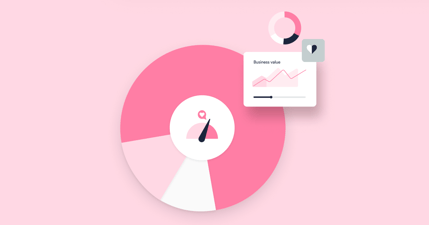End-User Personas are Changing; What About Your IT Support Capabilities and Targets?
Did you know that the average mix of IT support profiles and personas is changing? Here's why IT service desks need to respond.

Is your IT service desk treating every end-user in the same way? If it is, it needs to understand the benefits of personas and profiles. I’ll explain these next, but this blog isn’t about the need for personas and profiles. Instead, it’s about the fact the average mix of these IT support profiles is changing, and IT service desks need to respond. But let’s begin with what personas and profiles are.
A quick introduction to personas and profiles
Personas and profiles describe and group “customers” based on behaviors and motives. They are different, though:
- Personas are semi-fictional representations of the customers and usually include assumptions. They might be based on market research and survey data with little customer interaction.
- Profiles, on the other hand, rely on real customer conversations and interactions, with research done in interactions with the customers, and the assumptions (or hypotheses) can be validated or invalidated.
The more a service provider understands its customers, the better its decisions when developing services for them. Companies might benchmark against others in their industry to get this understanding. However, we’ve concluded that the behavioral model for IT support is similar regardless of industry. Instead, the most significant differentiators in end-user behavior and value creation come from culture and behavioral IT profiles.
These IT support profiles give the IT service desk a good understanding of how different customer groups should be addressed, each group’s main pain points, and what creates the most value for end-users. This profile knowledge can be used in service interactions (with customers) and for investment decisions related to different service channels, processes, products, etc.
If you want to know more about profiles, please read The Definitive Guide on Using Profiles in the IT Service Desk.
IT support profiles
HappySignals’ IT support profiles were created from dozens of individual and 20 group interviews with end-users in different roles across different organizations. More than 500 people were interviewed with the two main factors that impact end-user experience and behavior captured by our psychologist.
Four IT support profiles were created as a result:
- Doers can solve issues themselves using self-help tools and will often help their colleagues
- Prioritizers are familiar with IT but don’t want to use their own time dealing with IT issues and expect the IT service desk to help
- Supported are not comfortable with technology, willing to read instructions, or learn to use self-service capabilities
- Triers try to fix IT issues themselves but usually can’t; they prefer personal help and want to learn from it.
The behaviors of these four IT support profiles are shown in the diagram below.

How different IT support profiles experience the IT service desk
The latest IT Experience Management (ITXM) Benchmark data shows the following IT support profile data for 2023:

There’s not an equal mix of profiles in an organization, and you can see that the profiles differ in terms of how they perceive the IT support they receive – from Doers at +76 Happiness to Supported at +87 Happiness (where the overall average is +79). It’s also interesting to see how lost productivity levels differ by profile.
We’ve tracked the relative mix of Doers, Prioritizers, Supported, and Triers across our customer base since 2015. Initially, the mix was 59% Doers, 16% Prioritizers, 15% Supported, and 10% Triers. It’s essential that your IT service provider understands the differences between these IT support profiles. For example, Doers “…are eager and also capable of solving IT-related problems themselves. They Google solutions before contacting IT support. People often ask Doers for help. Doers are happy to help but might end up using up too much of their work time for this. Sometimes Doers try to teach others to solve issues themselves, but it’s often quicker to fix the issue.” Your organization must also know how its end-users map to these IT support profiles.
How the IT support profile mix is changing
In addition to understanding your organization’s IT support profile mix, it’s also important to know how the “average” mix is changing over time and that this is likely to be reflected in your organization.
As shown in the table below, the average data points for our customers between 2021 and 2023 offer some interesting insights. Looking at three of the profiles – Doers, Supported, and Triers – the change in this period might not be noticeable, with:
- Doers drop from 54% to 53% (having started at 59% in 2015)
- Supported drop from 19% to 16% (having started at 15% in 2015)
- Triers stay static at 8% (having started at 10% in 2015).
However, the number of Prioritizers has grown from 18% to 24% in the same time frame (having started at 16% in 2015). This is a significant change (+33%), with the biggest jump (+26%) occurring in 2023.
Profile-based data for 2021-2023
|
|
Percentage |
Happiness |
Lost Time |
||||||
|
Profile |
2023 |
2022 |
2021 |
2023 |
2022 |
2021 |
2023 |
2022 |
2021 |
|
Doers |
53% |
56% |
54% |
+76 |
+73 |
+73 |
196m |
199m |
198m |
|
Prioritizers |
24% |
19% |
18% |
+83 |
+81 |
+81 |
173m |
172m |
167m |
|
Supported |
16% |
17% |
19% |
+87 |
+85 |
+84 |
191m |
191m |
179m |
|
Triers |
8% |
8% |
8% |
+83 |
+80 |
+80 |
212m |
212m |
205m |
What this (likely) means
We’ll continue to monitor this trend, having previously thought the profile mix was relatively stable. The 2024 aggregated data should prove or disprove this.
But if this indicates a shift in the IT support profile mix and more end-users are fitting the Prioritizers IT support profile, there will be a change in the overall expectation of IT support. Because Prioritizers “…often have the competence to solve IT issues but are unwilling to use their own time. Prioritizers see dealing with IT issues as not part of their job. They only want to know how long solving it takes and if there are any workarounds. Prioritizers are on a schedule. They value fast service and prefer solving issues during the session. Prioritizers might also put off problem-solving or finding workarounds if they see contacting support as too time-consuming.”
The increase in Prioritizers has come from the Doers and Supported profiles (and is partially hidden by rounding errors). However, the reasons for this are currently unknown. There could be various root causes, including:
- People’s capacity to self-solve is reduced (caused by increased workload pressures)
- Self-help issues
- Better IT service desk capabilities.
The latter of these appears likely, given the increase in Happiness across all four profiles shared in the table above.
No matter the root cause(s), the change and potential future changes will impact IT support strategies, practices, and metrics (and targets), including the industry push to use self-help capabilities. Importantly, though, these data points are averages across our customer base. Your organization might be aligned with these figures or an outlier, depending on the circumstances. But you won’t know without experience data for your IT support!
For more information on IT Support Profiles please check out our Definitive Guide. To read the full Benchmark report please see here.
Related content

23.06.2022
How to Create the Business Case for IT Experience Management
Employee or end-user happiness has a business case. Yes, really. In this blog, I explain why and how IT experience ...
Read more >
09.07.2021
What makes Enterprise IT end-users happy in 2021?
In the past year, the COVID-19 pandemic has forced organisations to rapidly transition to remote work. Measuring, ...
Read more >
